Bye Bye Boomers
Good news — spring is here! Customers are in the stores buying bedding plants, nursery stock and all the accoutrements of our glorious lawn and garden category. Gosh, we feel great.
Danger Will Robinson Danger! Have you looked at the consumers lately? They have gotten younger. In fact, many of today’s customers of petunias and lawn fertilizer may not have understood the Will Robinson reference. How do we sell to Generations X and Y? And why should we care? They are buying a lot of homes — in fact Xers have bought their first homes on a pace faster than the Boomers.
Let’s start at the beginning — we will coin the terms used by marketers for years — Boomer, X and Y.
Distinction
Baby Boomers. These are the much ballyhooed group of consumers born after the Second World War — 1946-1964. There are 78 million of them, and they have driven both American cultural trends and consumer product direction forever. Now ages 58-40.
Generation X. This group, born between 1965 and 1976, is a relatively small group of 44 million now ages 39-28. Dubbed with negative labeling such as “slacker,” “X” and “busters,” this group has often been ignored by product marketers in lieu of the much larger Boomer group.
Generation Y. Sometimes called the “Millennials” or “Echo Boomers,” they are the large group born between 1977 and 1994, 71 million strong, ages 27-10.
The Defined Customer
The bedding plant section of the lawn and garden sector has always been driven by a tightly defined consumer: homeowner, female, 35-55 years old and reasonably affluent with a household income in the $45-55 million range depending on where in the country we are looking. Those of us who grew up in this business felt we had a pretty good handle on this mythical typical shopper; we knew how she shopped for our product and how she made most of her decisions at retail. But mostly we had a great idea on what motivated her. We too kept up with the “Joneses;” we too lived in suburbia and traded up houses from time to time. We shared references as we grew up with the same network TV shows.
So, how are X and Y different from the Boomers? What does that mean long term for gardening? And how the heck do we reach them?
In full disclosure — this old Boomer was born in 1955. I had to use a rotary phone (old phone number Michigan 2-0604) and sit close to the TV set so I could change channels — not that much was on. I remember the first time I saw a color television, where I was when JFK was shot and how to use the Dewey Decimal System. By contrast, the typical Y does not understand when you make the “phone me” finger movement with the circular motion, does not remember Ronald Regan as president; grew up with MTV as the most important station; and can access more information in five minutes on the Internet than we could in a university library in a full day.
What does this mean for gardening in general? Overall, good news. Most demographers agree that both the X and Y group are much more attuned to nature than their parents. Just look at the sales of mountain bikes — crazy young people racing down step slopes at high speeds. This is a group that has strong appreciation for all things outdoors.
Using the Information
So how do we use this? What do we do with our products, displays and services to garner more share with X and Y?
They like choice. If Toyota needs to add MP3 capability in its new Scion, you need to analyze what you are doing to offer these “kids” enough choices. Home builders have found that this group demands thousands of options when designing their homes — is your retail space set up to match the builder’s long list of options? Offer more mix and match, wider color choices and more sizes.
They have smaller homes. Make sure you offer products for small spaces. This is a group who wants a quiet courtyard not a 8,000 sq.ft lawn to mow. For that space, have fragrance, water features, art, pre-planted decorative bowls, etc.
They demand information. If they do not get it from you, they are masters of the Internet and will go elsewhere. Be the information depot on plants and plant usage. These generations are far removed from the farm, so they don’t know the term “mulch.” Show them that a 3-inch deep layer of green material will use less water and help the plant and the planet.
Is your Web site up to snuff? You do not need to write an encyclopedia on gardening — just effectively link to one. Is your site fresh? Do you test it with those in their 20s?
Be green. Generation Y will be the greenest consumers ever, are you ready? This is the group that is pushing packaging shifts in all consumer products — smaller boxes, less cardboard, recycling directions easily displayed. If General Motors can get its arms around this topic with small cars so can we.
They are socially and ethnically diverse. Have a bilingual sales staff and signage if appropriate, understand decorating differences between Hispanics, African-Americans and Asians. Á Generation Xers are not necessarily married and may just be roommates. Men are buying more consumer products and are staying home with children at a higher rate; gay couples have children, and both X and Y have grown up with this diversity. Are you keeping your product offering up to speed? Flower colors, vegetable plant trends, lighter bags of soil mixes to hardscape supplies are all going to shift as X and Y buy more.
They understand value. Maybe you tried bulk items years ago when it was in vogue in the early 80s; maybe it is time to look again. Be very straight with your promotional work — these groups have very attuned ad sensors and can spot a weak marketing claim at the speed of DSL.
Keep up to Speed
First, immediately go out and subscribe to a few magazines. American Demographics will help translate some of this back into plain business talk. It is must-read for a product or service marketer. Then go hit a newsstand and get some ideas. If we had to read Martha Stewart Living to better understand the Boomers, we can sure as heck wade through Redbook, Self or any number of titles that aim at the younger audience.
Second, go shopping. Look to the national homebuilders and how they market to a younger audience. Go to subdivision model homes and chat with the sales teams. Look at the living spaces and colors used in the model homes. Hit the stores that the X and Y shop at; what are the mannequins wearing, look at colors and the in-store signage — the signs may not speak to you, but they may help you speak to your younger customers.
Most importantly, watch your shoppers. We are always too busy in the spring to watch, but it is a priceless time. Ask them where they have shopped today; ask them how you can do a better job; ask them how they like to get information about gardening.
So, while young Will Robinson had a friendly robot looking after him, we have to succeed on our own. We grow and sell a wonderful product, and I am certain we will be able connect with X and Y.




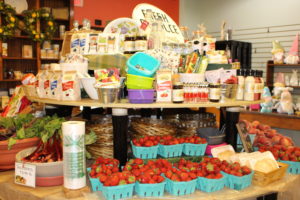

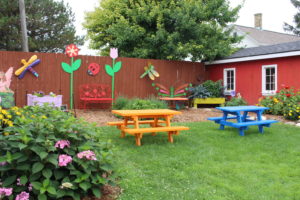





 Videos
Videos





